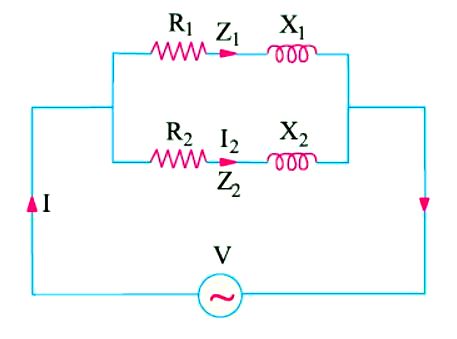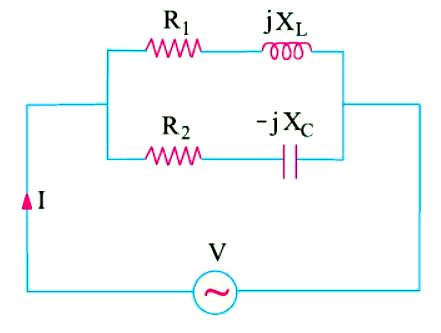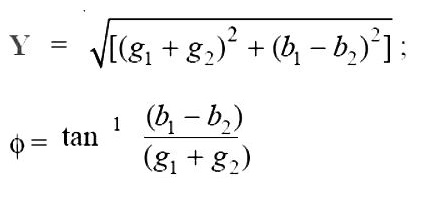Solving Parallel Circuit Complex or Phasor Algebra Method
In this article we explain the Solving Parallel Circuit Complex or Phasor Algebra Method.
Consider the parallel circuit shown in Figure (A). The two impedances, Z1 and Z2, being in parallel, have the same potential difference across them.
Now I1 = V/Z1 and I2 = V/Z2
Total current I = I1 + I2
= V/Z1 + V/Z2
= V(1/Z1 + 1/Z2)
= V(Y1 + Y2)
= VY
where Y = total admittance = Y1 + Y2

It should be noted that admittances are added for parallel branches, whereas for branches in series, it is the impedances which are added. However, it is important to remember that since both admittances and impedances are complex quantities, all additions must be in complex form.
AdBlock-2

Simple arithmetic additions must not be attempted. Considering the two parallel branches of Figure (B), we have

Similarly,

Total admittance Y = Y1 + Y2 = (g1 − jb1) + (g2 + jb2) = (g1 + g2) − j (b1 − b2) = G − jB

The polar form for admittance is Y = Y ∠ φº where φ is as given above.
![]()
Total current I = VY ; I1 = VY1 and I2 = VY2
If V = V ∠0º and Y = Y ∠ φ then I = VY = V ∠0º × Y ∠ φ = VY ∠ φ
In general, if V = V ∠ α and Y = Y ∠ β, then I = VY = V ∠ α × Y ∠ β = VY ∠ α + β
Hence, it should be noted that when vector voltage is multiplied by admittance either in complex (rectangular) or polar form, the result is vector current in its proper phase relationship with respect to the voltage, regardless of the axis to which the voltage may have been referred to.
Read article – Solving Parallel Circuits Vector or Phaser Method
Visit NCERTplanet.com for NCERT solutions and Textbook downloads




